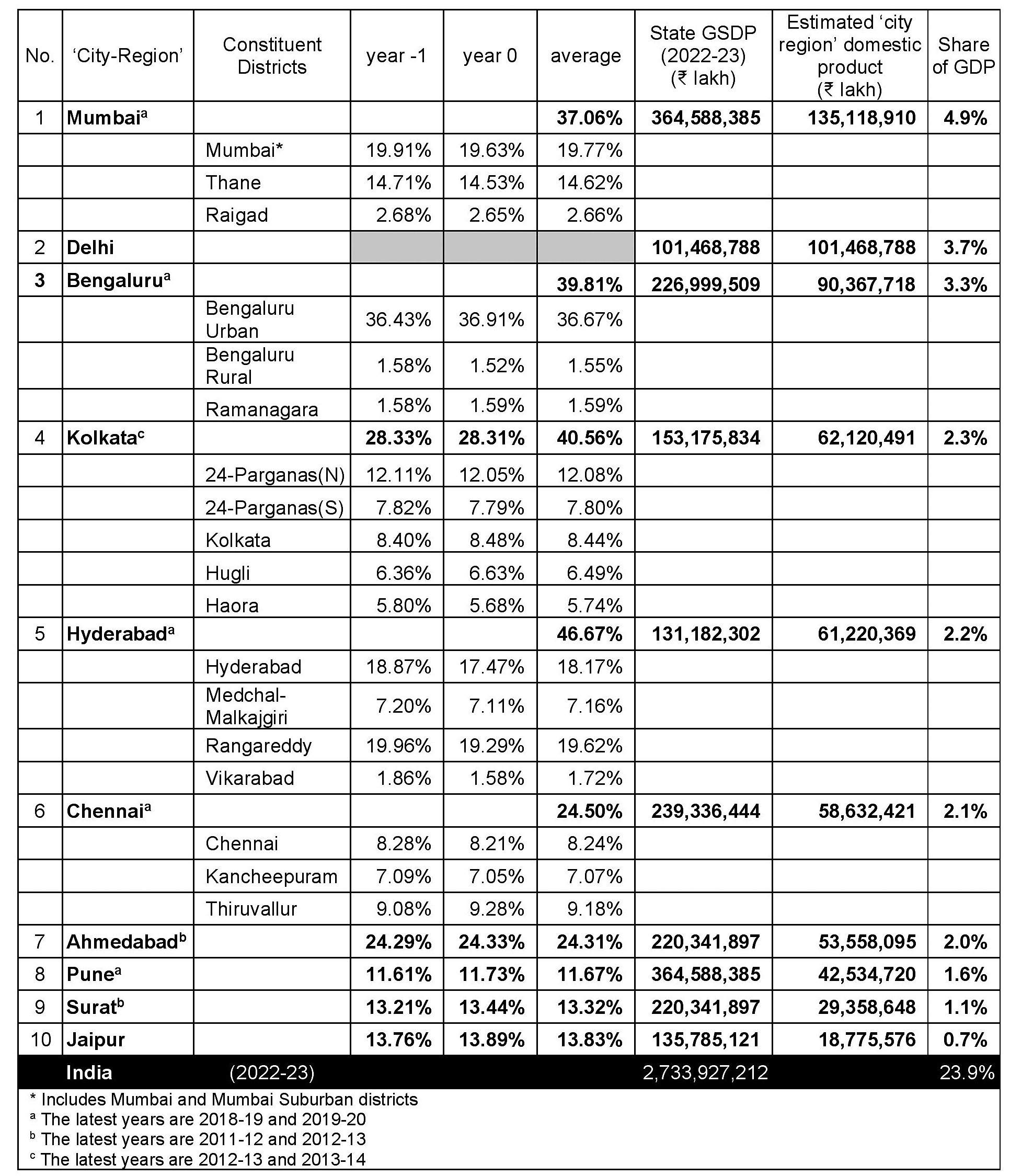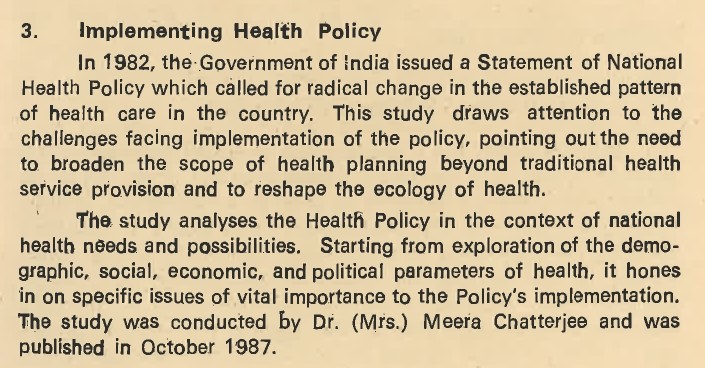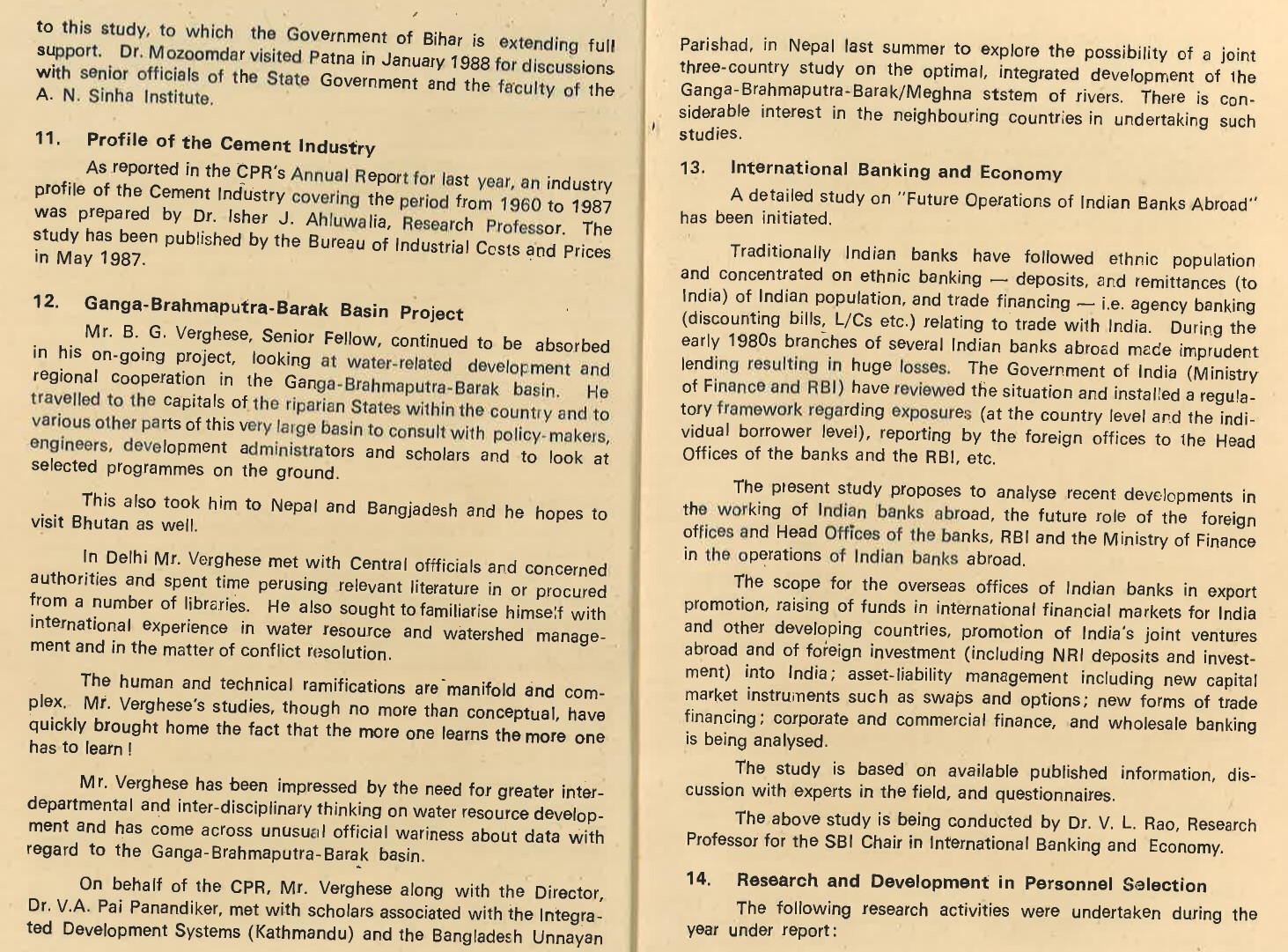Figure A: Estimated Share of Gross Domestic Product for ‘City-Regions’ (2022-23)
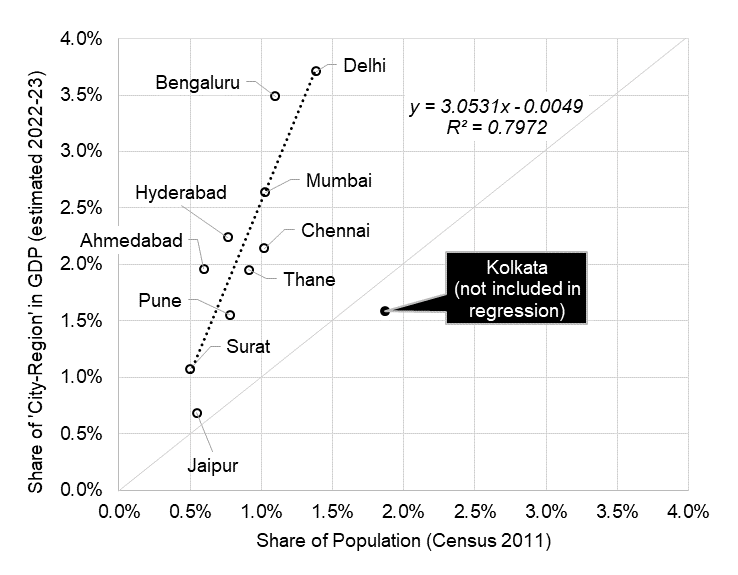
Figure A shows the relationship of the share of ‘city-region’ in the gross domestic product (GDP) with its population share. Kolkata is an outlier, as the only ‘city-region’ whose share in GDP is less than its share in population. For the ten ‘city-regions’, the aggregate share of ‘city-region’ domestic product in GDP was 21.1%, which is more than double that of its population share in 2011, which was 9.6%, reflecting the higher per capita domestic product, compared to the national average, associated with these large ‘city-regions’. Note that this is not all urban, as the ‘city-region’ as defined here, includes both urban and rural populations.
But, unlike China, India does not estimate economic activity at the city level, except Delhi, which is a state-level entity, so, its gross state domestic product (GSDP) is available along with all other states. So, how was this ‘city-region’ domestic product generated? In this situation, the following simple but crude exercise was conducted.
There has been some effort to generate district domestic product estimates (DDP) but these vary widely by state, with some states providing recent updated estimates and others that have not provided estimates for over a decade. The top ten cities by population in 2011 were considered. Each of these ‘city-regions’ were associated with a district or set of districts (for Bengaluru, Chennai, Hyderabad and Kolkata). The Appendix gives the details of the districts that each ‘city-region’ were associated with. For each of these districts (except Jaipur, for which the estimate was directly available), the 2022-23 DDP estimate was calculated in the following manner. For each district, the share of DDP to the state’s GSDP was calculated for the latest two years for which data was available (except the years 2020-21 and 2021-22, which were excluded due to the pandemic). The average share of these two years was then multiplied into the state’s GSDP for 2022-23 to generate the estimated DDP for 2022-23. For ‘city regions’ associated with only one district, the DDP is considered the domestic product for the ‘city-region’ and for ‘city regions’ associated with a set of districts, the sum of the DDP for those districts were taken as the estimate. The specific calculations are given in Appendix A.
Appendix A

ADDENDUM
Figure B: Estimated Share of Gross Domestic Product for ‘City-Regions’ (2022-23)
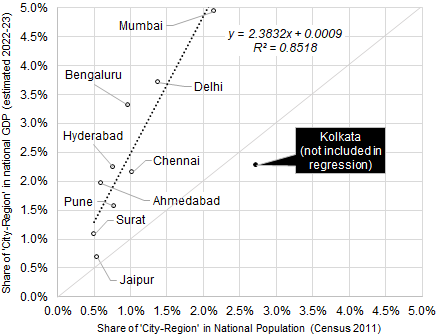
After the blog was put out on Thursday, I received feedback that it did not reflect the spatial spread of the metropolitan region boundaries for many cities. As mentioned earlier, this is a crude estimate, both in defining the city region and its share of GDP. Nevertheless, some adjustments have been made, viz. to Mumbai (including Thane and Raigad) and Kolkata (including Haora and Hugli) on the western bank of the Hooghly river and Bengaluru (including Ramanagara and excluding Tumakuru, which has its own urban development authority and is a smart city in its own right!). Other possible adjustments, e.g. in Hyderabad and Chennai, have not been made. Surat ‘city region’ is Surat district, not the five districts in the report of NITI Aayog. It is also clarified that the Pune ‘city-region’, i.e., district, includes both the Pune and Pimpri-Chinchwad municipal corporations.
A revised Figure B and Appendix B is provided. As can be seen, the broad pattern remains similar. For the ten ‘city-regions’, the aggregate share of ‘city-region’ domestic product in GDP was 23.9%, which is more than double that of its population share in 2011, which was 11.4%. For four cities (excluding Delhi), the share of the ‘city-region’ in the GSDP is quite high, almost at 40% or more for Hyderabad (47%), Kolkata (41%) and Bengaluru (40%) and fairly close for Mumbai (37%). All these cities are capitals of their states. Indeed, the Mumbai-Pune agglomeration accounts for almost half the GSDP of Maharashtra, among our most developed states. The other two capitals, Chennai and Ahmedabad, account for a quarter of their state GSDP and Jaipur, just under one-seventh. Surat and Pune are the only two non-capital cities.
Appendix B
